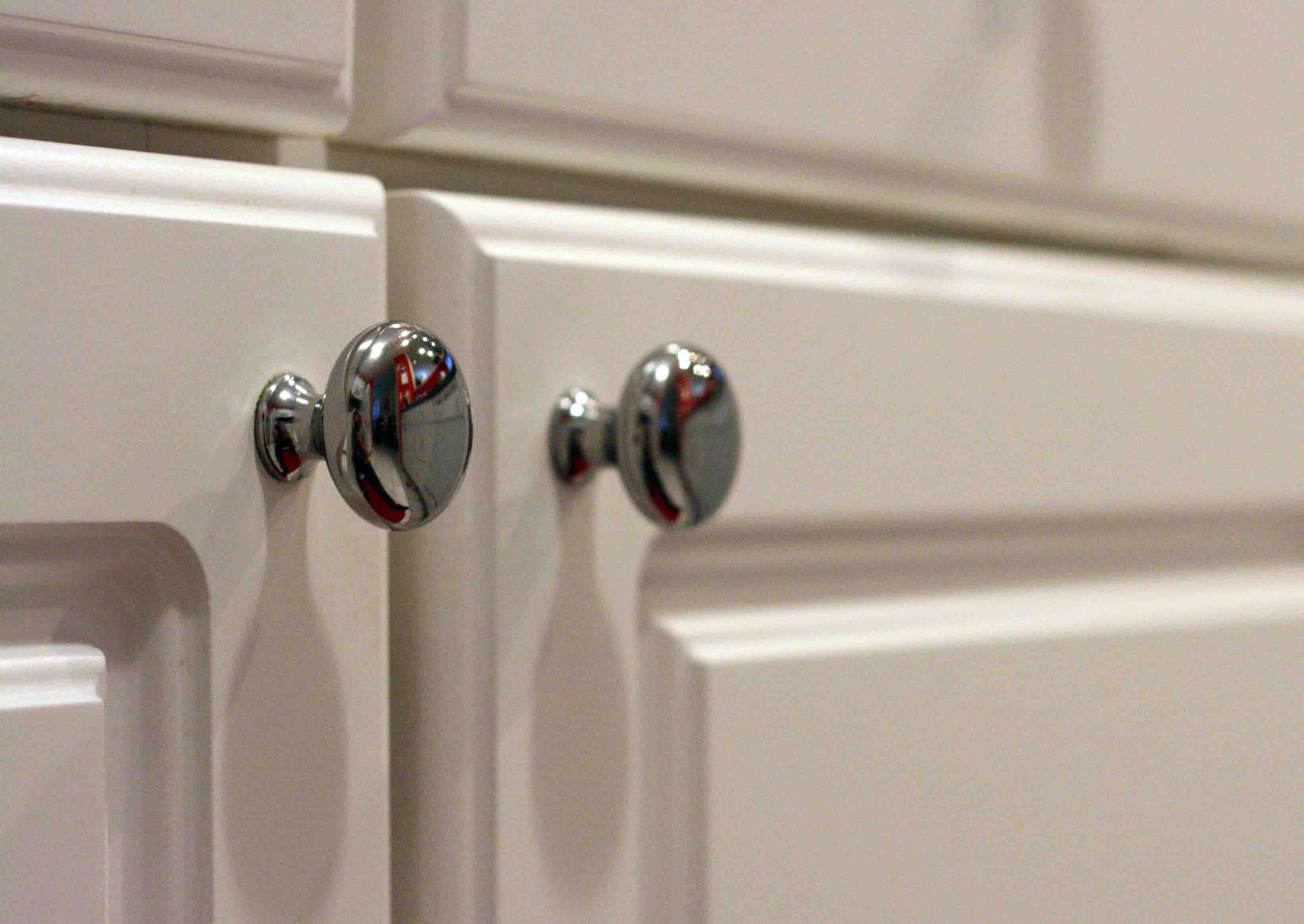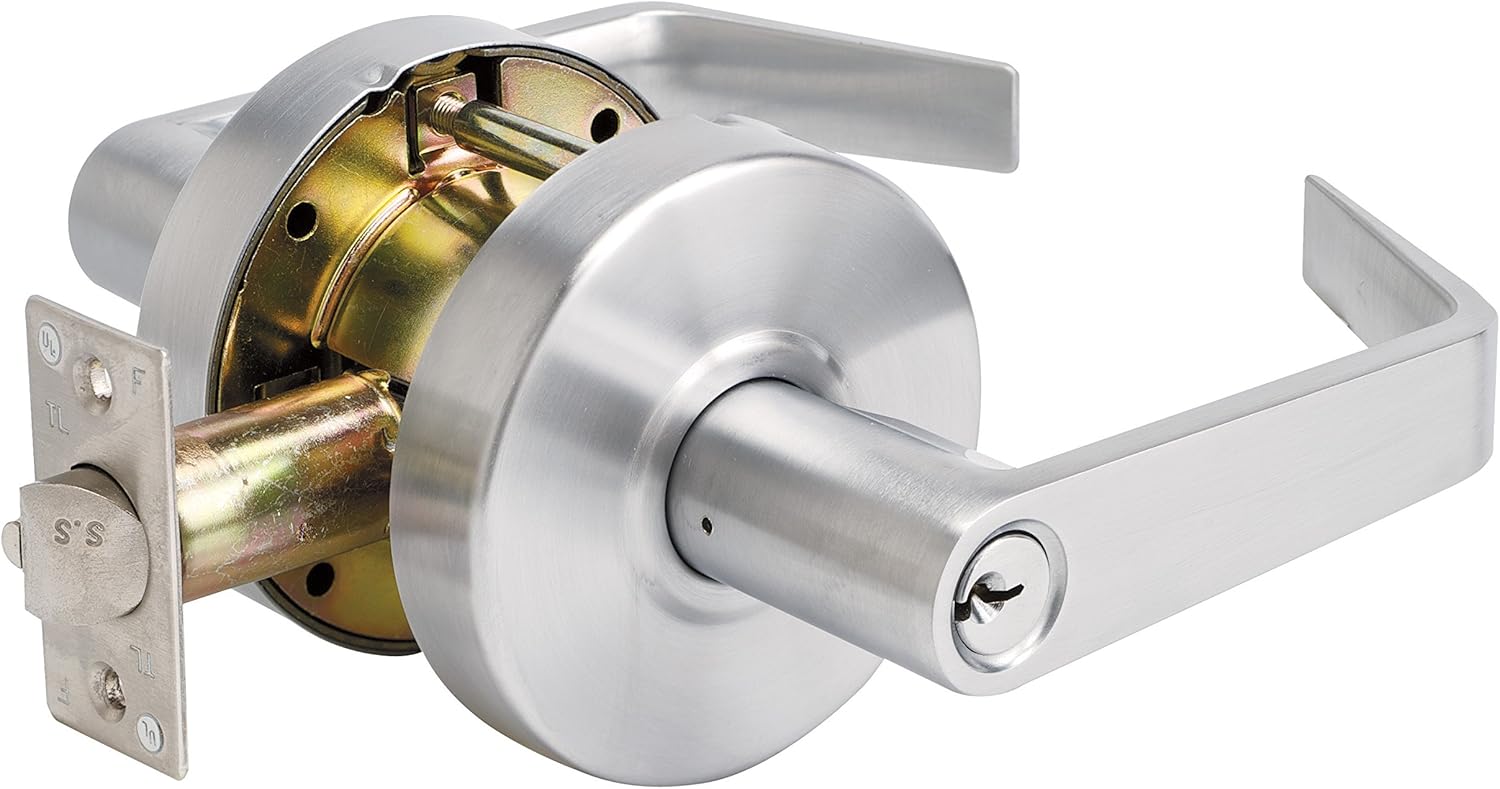Types of Locking Cabinet Door Handles

Locking cabinet door handles offer an extra layer of security, safeguarding valuable items from unauthorized access. They come in a variety of styles and designs, catering to diverse aesthetic preferences and functional needs.
Types of Locking Cabinet Door Handles
Locking cabinet door handles are classified based on their locking mechanism and design. The most common types include:
- Keyed Handles: These handles require a key to unlock, providing the highest level of security. They are often used for cabinets containing valuable items or in high-security areas. The key can be a standard key or a more sophisticated, specialized key.
- Push-Button Handles: These handles feature a push-button mechanism that unlocks the cabinet when pressed. They are generally easier to use than keyed handles but offer less security. Push-button handles are often used for cabinets containing less valuable items or in areas where frequent access is required.
- Lever Handles: These handles are activated by a lever mechanism that unlocks the cabinet when lifted or pushed down. They are generally easier to use than keyed handles and are commonly used for cabinets containing everyday items.
- Combination Handles: These handles feature a combination lock that requires a specific code to unlock. They offer a higher level of security than push-button handles and are often used for cabinets containing valuable items or in areas where security is a concern.
- Magnetic Handles: These handles use a magnetic mechanism to unlock the cabinet. They are often used for cabinets containing less valuable items and are generally considered less secure than other types of locking handles.
Handle Design and Materials
Locking cabinet door handles come in a variety of designs, catering to different aesthetics and preferences. The most common handle designs include:
- Modern Handles: These handles are characterized by their sleek and minimalist designs. They often feature clean lines and geometric shapes, complementing modern interiors.
- Traditional Handles: These handles are inspired by classic designs and often feature intricate details and ornate finishes. They are well-suited for traditional interiors and can add a touch of elegance to any space.
- Contemporary Handles: These handles combine modern and traditional elements, creating a unique and stylish look. They often feature bold colors and textures, adding a touch of personality to any space.
The materials used in manufacturing locking cabinet door handles vary depending on the type and design. The most common materials include:
- Brass: Brass is a durable and corrosion-resistant metal that is often used for locking cabinet door handles. It is available in a variety of finishes, including polished, brushed, and antique.
- Stainless Steel: Stainless steel is a strong and durable metal that is often used for locking cabinet door handles. It is resistant to corrosion and is easy to clean.
- Aluminum: Aluminum is a lightweight and durable metal that is often used for locking cabinet door handles. It is available in a variety of finishes, including brushed, anodized, and powder-coated.
- Zinc Alloy: Zinc alloy is a cost-effective and durable metal that is often used for locking cabinet door handles. It is available in a variety of finishes, including chrome, nickel, and bronze.
Handle Features
Locking cabinet door handles can feature various additional features, such as:
- Keyless Entry: Keyless entry handles allow access to the cabinet using a code or a remote control, eliminating the need for a key.
- Deadbolt: A deadbolt provides additional security by locking the cabinet door into the frame, making it more difficult to pry open.
- Adjustable Backset: Adjustable backset handles allow you to adjust the distance between the handle and the door frame, making them suitable for different door thicknesses.
- Anti-theft Features: Some locking cabinet door handles include anti-theft features, such as tamper-resistant screws or hidden locking mechanisms, making it more difficult for thieves to gain access to the cabinet.
Installation and Maintenance of Locking Cabinet Door Handles

Installing a locking cabinet door handle can be a straightforward process, but it’s essential to understand the different types and methods involved to ensure a secure and functional installation. This section delves into the step-by-step installation process, highlighting common challenges and offering troubleshooting tips. Additionally, we’ll discuss the routine maintenance required to keep your locking cabinet door handles in optimal condition.
Installing Locking Cabinet Door Handles
Installing a locking cabinet door handle requires a few basic tools and a methodical approach. Here’s a step-by-step guide:
- Choose the Right Handle: The first step is selecting the appropriate locking cabinet door handle for your needs. Consider the style, finish, and size of the handle, as well as the type of locking mechanism.
- Prepare the Door: Before installation, ensure the door is clean and free of any debris. Mark the location for the handle using a pencil or marker.
- Drill Pilot Holes: Using a drill bit slightly smaller than the screws provided with the handle, drill pilot holes at the marked locations.
- Install the Handle: Align the handle with the marked locations and secure it to the door using the provided screws.
- Attach the Locking Mechanism: If the handle comes with a separate locking mechanism, install it according to the manufacturer’s instructions. This typically involves attaching the latch to the door frame and securing the strike plate to the door.
- Test the Installation: After completing the installation, test the handle to ensure it operates smoothly and locks securely.
Installation Methods for Different Handle Types
The installation methods for various types of locking cabinet door handles may differ slightly. The following table Artikels the key differences:
| Handle Type | Installation Method | Mortise Handle | Requires a mortise cut in the door to accommodate the handle's mechanism. | Euro Profile Handle | Installed with a cylindrical lock mechanism that fits into a pre-drilled hole in the door. | Lever Handle | Can be installed using a standard backset or a mortise cut, depending on the design. | Pull Handle | Typically installed with a concealed lock mechanism that is secured to the door frame. |
|---|
Troubleshooting Installation Issues
While installing a locking cabinet door handle is generally straightforward, certain issues can arise. Here are some common problems and their solutions:
- Door Misalignment: If the door is not properly aligned, the handle may not latch securely. Adjust the door hinges or use shims to correct the alignment.
- Striker Plate Placement: An improperly positioned striker plate can prevent the latch from engaging. Realign the striker plate using a screwdriver or adjust the latch position.
- Loose Screws: If the screws are loose, the handle may become wobbly or fail to lock properly. Tighten the screws using a screwdriver.
- Damaged Locking Mechanism: If the locking mechanism is damaged, the handle may not function correctly. Replace the locking mechanism or contact a professional for repair.
Maintenance of Locking Cabinet Door Handles
Regular maintenance is crucial for extending the lifespan and ensuring the proper functionality of locking cabinet door handles. Here’s a guide to keep your handles in top shape:
- Cleaning: Clean the handle regularly with a soft cloth and mild soap to remove dust, dirt, and fingerprints. Avoid abrasive cleaners that can damage the finish.
- Lubrication: Lubricate the locking mechanism with a light oil or lubricant to prevent rust and ensure smooth operation.
- Repair: If the handle is damaged or malfunctioning, consider repair or replacement. Minor repairs can be performed by a skilled individual, while more complex issues may require a professional.
Security Considerations for Locking Cabinet Door Handles

Securing your valuables requires more than just a simple lock. Understanding the nuances of locking mechanisms and their vulnerabilities is crucial for effective protection. This section delves into the security considerations of locking cabinet door handles, comparing their effectiveness, identifying potential weaknesses, and providing strategies to enhance security.
Comparing Security Levels of Locking Mechanisms
Different locking mechanisms offer varying levels of security. Understanding these differences is essential for choosing the most appropriate handle for your needs.
- Keyed Locks: These are the most common type, relying on a physical key for access. They offer a reasonable level of security, especially when paired with high-quality locks and keys. However, they are susceptible to picking and bumping, techniques used to bypass the lock without the correct key.
- Combination Locks: These locks require a specific combination of numbers to unlock. They are generally more secure than keyed locks, as they are less susceptible to picking or bumping. However, they can be vulnerable to brute-force attacks, where an individual attempts multiple combinations until the correct one is found.
- Electronic Locks: These locks use electronic mechanisms for access control, often requiring a PIN code or a key card. They offer a high level of security, as they are resistant to picking and bumping. However, they can be vulnerable to hacking or tampering with the electronic components.
Vulnerabilities and Mitigation Strategies
Each type of locking mechanism has inherent vulnerabilities. Understanding these weaknesses is essential for implementing effective mitigation strategies.
- Keyed Locks:
- Vulnerability: Picking and bumping.
- Mitigation: Use high-quality locks with anti-pick and anti-bump features. Consider using a double-locking mechanism for increased security.
- Combination Locks:
- Vulnerability: Brute-force attacks.
- Mitigation: Choose a complex combination with a high number of digits. Consider using a lock with a tamper-resistant mechanism.
- Electronic Locks:
- Vulnerability: Hacking and tampering.
- Mitigation: Choose locks with strong encryption and tamper-resistant features. Regularly update the software and firmware of the lock.
Importance of High-Quality Locking Handles
Investing in high-quality locking handles is crucial for enhancing security. These handles are typically made from durable materials and feature robust locking mechanisms, offering greater resistance to tampering and forced entry.
- Durable Materials: High-quality handles are often made from materials like solid brass or stainless steel, which are resistant to corrosion and wear and tear.
- Robust Locking Mechanisms: These handles feature advanced locking mechanisms that are more difficult to pick or bump, providing a higher level of security.
- Enhanced Resistance to Tampering: High-quality handles often include tamper-resistant features, such as hardened pins or anti-drill plates, making them more difficult to break into.
Choosing the Most Secure Locking Cabinet Door Handle
Selecting the most secure locking cabinet door handle depends on your specific needs and the level of security required. Consider these factors when making your choice:
- Type of Locking Mechanism: Keyed locks offer a reasonable level of security, while combination locks and electronic locks provide greater protection.
- Level of Security Required: The level of security required depends on the value of the items being stored and the potential risk of theft.
- Budget: High-quality locking handles can be more expensive, but they offer greater security and peace of mind.
- Ease of Use: Choose a handle that is easy to use and understand, especially for older individuals or those with mobility issues.
- Aesthetic Considerations: Choose a handle that complements the style of your cabinets and home decor.
Locking cabinet door handles can be a safety measure for families with young children, but it’s also important to create a fun and engaging environment for them. Choosing the right little girls bedroom wallpaper can transform a space into a whimsical haven, while locking cabinet doors ensures that curious little hands don’t get into anything they shouldn’t.
By balancing safety and creativity, you can create a space that’s both secure and stimulating for your little ones.
Locking cabinet door handles provide security, but they can also be a source of frustration for young children. If you’re looking for a way to create a magical and whimsical atmosphere in your child’s bedroom, consider adding fairy lights for girls bedroom.
While fairy lights may not offer the same level of security as a locking handle, they can help create a sense of wonder and enchantment, making bedtime a little less stressful for both parents and children.
